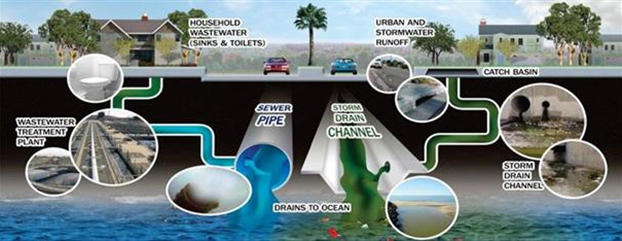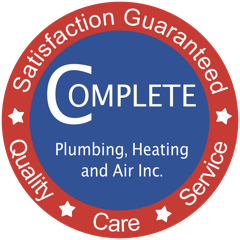HISTORY OF THE CITY OF ANAHEIM HILLS
Before the development, a few scattered low-density neighborhoods existed in the area including Peralta Hills and Mohler Loop (tracts which still exist today) that were developed primarily in the 1940s and 1950s. The remaining portions of Anaheim Hills were primarily developed in the 1970s after rancher and landowner Louis Nohl sold his massive parcel in the foothills east of Anaheim. The area was taken over by Texaco Industries in 1970 when the company announced plans to develop an expansive and upscale master-planned community of 7,000 homes, estates, and townhomes. The original master plan included a proposal for three new lakes with high-density condominiums clustered around these water features. The initial master plan proved to be unsustainable due to the topography and geology of the area. Construction of the community began in 1971 and was branded as a rural enclave and alternative to the more dense subdivisions emerging in the Orange County basin with homes on large lots, hiking trails, a golf course, and low densities. Anaheim Hills is the first residential development to utilize “Landform Grading.”The community grew quickly and by 1974 the Orange Unified School District had constructed a high school to serve the growing community. In 1990, the city of Anaheim approved several large developments surrounding Weir Canyon Road (East Hills and The Highlands) expanding the community toward the 241 toll road. In 2007, the Irvine Company received approval for additional 2,500 homes just east of the 241-toll road on a parcel of land it has owned for over fifty years. However, in 2014 The Irvine Company donated the land for these additional 2,500 homes to the County of Orange to be preserved as open space.
WHERE DOES ANAHEIM HILLS CITY WATER COME FROM?
https://www.youtube.com/watch?time_continue=25&v=vEdSaLqVdOM
Anaheim hills water supply is a blend of groundwater from our own wells and water imported from Northern California and the Colorado River by the Metropolitan Water District of Southern California (MWD). The source water for our wells is an aquifer that is replenished with water from the Santa Ana River, local runoff, imported water, and purified recycled water. Managed by the Orange County Water District (OCWD), the groundwater basin is 350 square miles in area and lies beneath most of northern and central Orange County. Anaheim and more than 20 cities and retail water districts pump from the groundwater basin to provide water to homes and businesses. Your water source depends on where you live or work within the boundaries of our community. Generally, the source of water for areas east and south of the 57 and 91 freeway interchange is imported water. The central and western portions of Anaheim mostly receive groundwater or a blend with imported supplies.
In an effort to create a more reliable and local resource, the city is participating in the Groundwater Replenishment System. The Groundwater Replenishment System (GWRS) was constructed as a joint project of OCWD and the Orange County Sanitation District to recycle wastewater and provide a drought-proof source of water for our region.
The GWRS uses advanced treatment technologies to clean wastewater and then returns it to groundwater via recharge basins in Anaheim and direct injection near the coast. The water is further cleaned by layers of soil and rock and ultimately refills local water aquifers over time. It is important to remember that GWRS water does not go directly into your drinking water. Instead, it goes into the ground, where it will be naturally filtered by thousands of feet of soil and it will remain in the ground for years before it reaches drinking water well. You can find additional information on the GWRS by visiting the website or by calling OCWD directly at 714-378-3333.
ARE THERE CONTAMINANTS IN ANAHEIM HILLS CITY WATER?
The sources of drinking water for Anaheim hills residents (both tap water and bottled water) include rivers, lakes, streams, ponds, reservoirs, springs and wells. As water travels over the surface of the land or through the layers of the ground it dissolves naturally-occurring minerals and, in some cases, radioactive material, and can pick up substances resulting from the presence of animal and human activity. Contaminants that may be present in source water include Pesticides and herbicides, which may come from a variety of sources such as agriculture, urban stormwater runoff, and residential uses. Microbial contaminants, such as viruses and bacteria, which may come from sewage treatment plants, septic systems, agricultural livestock operations, and wildlife. Radioactive contaminants, which can be naturally occurring or be the result of oil and gas production or mining activities. Inorganic contaminants, such as salts and metals, which can be naturally occurring or result from urban storm runoff, industrial or domestic wastewater discharges, oil and gas production, mining and farming. Organic chemical contaminants, including synthetic and volatile organic chemicals, which are by-products of industrial processes and petroleum production, and can also come from gasoline stations, urban stormwater runoff, agricultural application, and septic systems
SHOULD I DRINK AND BATHE WITH ANAHEIM HILLS CITY WATER STRAIGHT FROM MY FAUCET?
Some people may be more vulnerable to contaminants in drinking water than the general population. Immuno-compromised people, such as those with cancer who are undergoing chemotherapy, persons who have had organ transplants, people with HIV/AIDS or other immune system disorders, some elderly persons and infants can be particularly at risk from infections. These people should seek advice about drinking water from their health care providers. The USEPA and the federal Centers for Disease Control guidelines on appropriate means to lessen the risk of infection by Cryptosporidium and other microbial contaminants are available from USEPA’s Safe Drinking Water Hotline at (800) 426-4791 between 10 a.m. and 4 p.m. Eastern Time (7 a.m. to 1 p.m. in California)- source: 2017Anaheim Water consumer confidence report.
https://www.anaheim.net/DocumentCenter/View/25904/Water-Quality-Report-2019
Complete Plumbing recommends installing a Catalytic Carbon Whole house water filtration system by Aqualistic Water Products to remove most of the harmful chemicals in your city water, leaving you with bottled quality water at every faucet in your home.
ANAHEIM HILLS PLUMBING TIPS
Fix leaky faucets. For every leak stopped, you can save 20 gallons of water per day. Develop a watering schedule for your irrigation system. To learn more, visit www.bewaterwise.com/calculator.html.
Use native plants in your landscaping. Planting and maintaining beautiful California native and water-friendly plants can save between 1,000 and 1,800 gallons per month. Install a high-efficiency toilet or clothes washer. A temporary rebate program is still available. Other rebates are also available for sprinklers and artificial turf. To learn more, visit www.ocwatersmart.com.
MWDSC has its own water conservation website. To find out more information on water-saving plants and other useful tips, visit www.bewaterwise.com.source: 2017 ANAHEIM HILLS RESIDENTS should make sure that their plumbing systems are in good working order and are leak-free. This is important, not only for saving money on your water bill and limiting damages to property, but it is our responsibility to provide clean fresh water for future generations.
DID YOU KNOW?
Water Leaks:

- Nationwide, more than 1 trillion gallons of water are lost annually due to household leaks. That’s equal to the annual water use of more than 11 million homes.
- The average household can waste more than 10,000 gallons each year due to correctable leaks. That’s enough to wash 270 loads of laundry!
- Ten percent of homes have leaks that waste 90 gallons or more per day! Common sources include toilets, faucets, showerheads, and landscape irrigation. But you should also consider less obvious sources of leaks: water heaters, ice makers, dishwashers, and filtration systems. Many of these are easily correctable, and fixing them can save about 10 percent on the average water bill.
- Be sure to check your toilet for leaks at least once a year. Put food coloring in the tank. If it seeps into the bowl without flushing, there’s a leak. And if your toilet flapper doesn’t close properly after flushing, replace it.
- Remember, one drip a second adds up to five gallons lost per day! So regularly check your faucets and showerheads, as well as all hoses and connectors.
- Many household leaks can be solved with simple tools and a little education — and fortunately, Do-It-Yourselfers have access to multiple resources. But even if you must pay for repairs, you will still save money in the long run. For more information on water conservation, visit www.ocwatersmart.com.
- Complete plumbing provides leak detection of even the smallest amount of water which could prevent costly water bills and possible damage due to water leaks
- Complete plumbing utilizes automatic water shut off valves that detect leaks, automatically shuts off the water to your home then sends you an alert via a smartphone app. You can turn the water on and off, monitor water usage and temperature right from your phone!
ANAHEIM HILLS CITY SEWER DRAINAGE SYSTEM
Sanitation staff ensures compliance with the City’s Sewer System Management Plan, sewer main cleaning, and pump maintenance at lift stations. The sewer infrastructure includes over 200 miles of sewer lines and 17 pumps and motors.
Sanitation staff is responsible for ensuring the reliability of the entire sewage system infrastructure to make certain that all wastewater generated within the City limits is delivered to a treatment facility for further processing.
- Most Anaheimhills homes have just one main sewer pipe that connects the sewer system from their house to the city’s main sewer system. Homeowners are required to maintain that sewer pipe up to and including the middle of the street and may be responsible for repair costs should a problem occur.
- Complete Plumbing can use a sewer drain camera and location device to inspect sewer lines for breaks, cracks root intrusions. This simple examination of your sewer system may save thousands of dollars in repair costs.
What is Storm Water Pollution?
Storm water is water from rain that does not soak into the ground. It flows over paved areas like streets, sidewalks, and parking lots, as well as roofs and sloped lawns. As it flows, the stormwater collects and carries pollutants such as litter, pet waste, pesticides, fertilizers, and motor oil. This “toxic soup” then flows through a massive system of pipes and channels directly into our local waterways and the ocean.
What is the difference between the storm drain system and the sanitary sewer system?
The storm drain system and sanitary sewer system are both large conveyance systems of underground pipes. This leads to the misconception that the systems are the same. They are in fact separated and serve different purposes.
The sanitary sewer system transports domestic sewage to a treatment plant. Domestic sewage includes wastewater from household and commercial plumbing, such as toilets, showers, and sinks. There, contaminants are removed from the sewage through a multi-stage process, which includes settling, filtering, and biological and chemical treatment. The treated water is then discharged into local waterways or used as reclaimed water.
The storm drain system, on the other hand, was designed to prevent cities from flooding. Its purpose is to quickly transport rain runoff (stormwater) away from the city and into the nearest waterway, without treatment. And so, any pollution carried by stormwater also enters our waterways untreated.

We have been serving Anaheim Residents for over 30 years and know a lot about Anaheim Hills water filtration systems, Anaheim Hills Plumbing Systems, Anaheim Hills heating, and air conditioning systems, Anaheim Hills tankless water heaters Anaheim Hills drain cleaning (make red wording clickable to applicable page within the website)
Call and ask about our Anaheim Hills residents specials
READY TO GET STARTED?